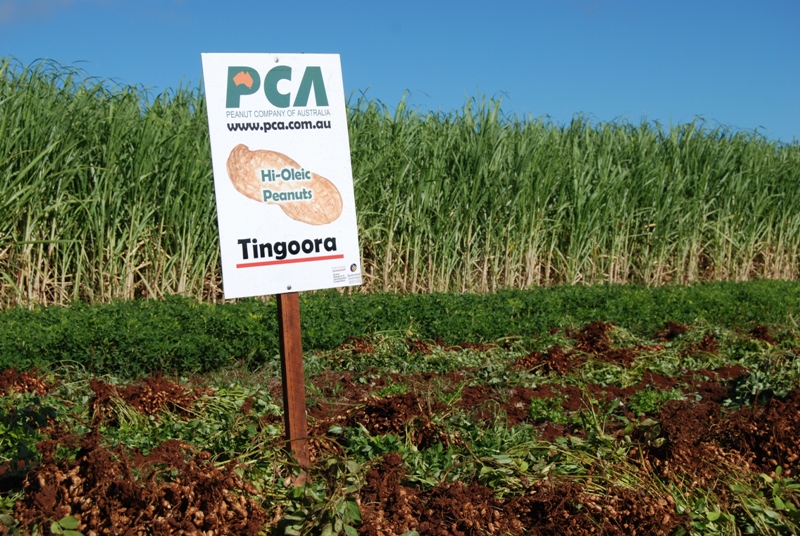Interested In Growing Peanuts?
If you are interested in growing peanuts commercially, PCA can provide specific agronomic and technical advice and has a number of handouts and booklets available. Please contact us for further information.

Basic Information
- Peanuts are “not a difficult crop to grow but are a difficult crop to grow well”.
- Returns depend on yields and quality. Best returns are obtained under reliable rainfall or irrigation with intensive management. Most types of irrigation can be used including sprinkler systems and furrow irrigation. Successful furrow irrigation requires good land levels and raised beds.
- Peanuts prefer sands, sandy loams and light clay loams; losses can be high in heavy or sticky soils.
- All new paddocks must be tested for pesticide and heavy metal residues prior to planting. PCA can assist with this process.
- Planting usually occurs from October to January in Queensland and NSW. Crops take about five months to grow although early-maturing varieties are also available. Planting should be timed so harvesting is conducted in a relatively dry time of the year.
- A minimum soil temperature of 18 degrees C is required for germination (measured at 50mm depth at 9:00am).
- The crop’s maturity is assessed to determine harvesting time. Harvesting is a two-part operation. Firstly, the tap-root is cut and the plant tops and peanut pods inverted to partially dry in the field for several days before a separate threshing operation is done.
- Optimum threshing occurs at a moisture content of 16-18%. Controlled drying brings the peanuts slowly to a safe storage moisture content and ensures optimum quality. Extended periods of paddock drying can cause higher losses, more splits, poorer quality and increased risk of rain damage.
- Peanuts should form part of a sustainable farming system in rotation with a grass or cereal crop.
Will You Need Special Machinery?
You’ll need to buy or hire some specialised machinery to farm peanuts in a commercial environment successfully:
- Planters – Peanuts must be planted with a row crop planter. Combine planters are not suitable. Plate planters (eg Covington and Janke) are commonly used as well as rotary cone and finger pick-up planters like Mason Deere and KMC. Vacuum precision planters (eg John Deere and Monosem) are gentle and well-suited for peanuts. Kinze planters with “edible bean” cups are not suitable.
- Harvesters – A digger / inverter is used to dig the peanuts from the soil. A combine or thresher is then used to separate the peanuts from the bush.
- Peanuts cannot be augered; belt elevators are used to move peanuts from storage bins to transport.
- Harvesting contractors are available to assist with harvesting. Contact us for further information.
- Timing of harvesting operations is critical to guarantee high yields and optimum quality. Many farmers purchase some harvesting equipment within one to two seasons.


Payments
- Growers are paid according to peanut quality. Samples are taken from each load and tested for moisture content and quality.
- The sample is then shelled and graded using a set of standard sieves.
- Payment is determined on the basis of the graded sample and the clean dry weight of the load.
- Kernel quality and the percentage of kernel content are the main determinants of final value of each load.
- PCA purchases peanuts directly from growers on tonnage contracts with set prices per grade and flexible payment options.
Contact us for further information.